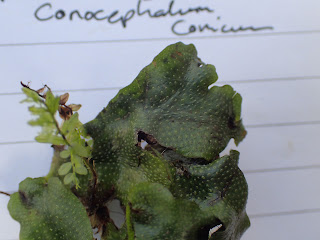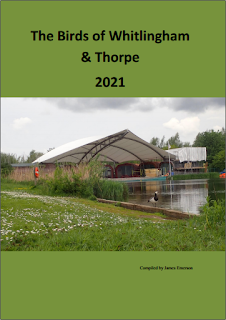23rd January 2022
The first WeBS count of the year, and I spent some time around the slipway ring reading, managing 13 Mute Swans, one Greylag Goose, one Barnacle Goose and three Black-headed Gulls. All ringed here or across the river at Thorpe, but at least the sightings are gradually building up a picture that will hopefully be added to when some of them disperse in spring.
Duck numbers were mostly quite low, although 55 Teal was a decent count. Otherwise there was the regular drake Mandarin, 87 Gadwall, 88 Mallard, 10 Shoveler, 4 Pochard and 188 Tufted Duck. The recent Goldeneye and Shag appeared to have departed. There were a few bits and pieces that I hadn't noted on my first couple of patch visits here this year, including a brief snatch of Cetti's Warbler song, a Kingfisher and a Lesser Redpoll.
Of later I have been doing my wildfowl counts in the afternoon rather than the morning so that I can wait until dusk in the hope of seeing a Ring-necked Parakeet that sometimes roosts on the island. I was in position again, and noted how white some of the trees on the island looked (presumably Cormorant guano, which although in some parts of the world is used as a fertiliser, here appears to be killing the trees). At about 16:05 I heard what sounded like a distant Parakeet call. A second call reassured me that it wasn't my imagination, and I managed to pick up the Ring-necked Parakeet in flight and track it as it flew across the island and into the top of a spindly tree. Once perched up it remained silent - had I been distracted or it been a bit noisier I would have probably missed it again, but as it happened I didn't, and I had my second patch tick of the year before the end of January (the pessimist in me says that this just cancels out the two Redpolls that appear to be primed for removal from the IOC list sooner rather than later...).
As with the past couple of years I expect that much of my wildlife recording will be carried out around Norwich in 2022, so I intend spending some time on my more neglected groups including Mosses and lichens. With this in mind I photographed a nice foliose lichen on a willow tree on my way round but haven't yet identified it. It's rather like a dark Punctelia subreducta, but I don't think the underside should be this dark a shade of brown if its that species.
































